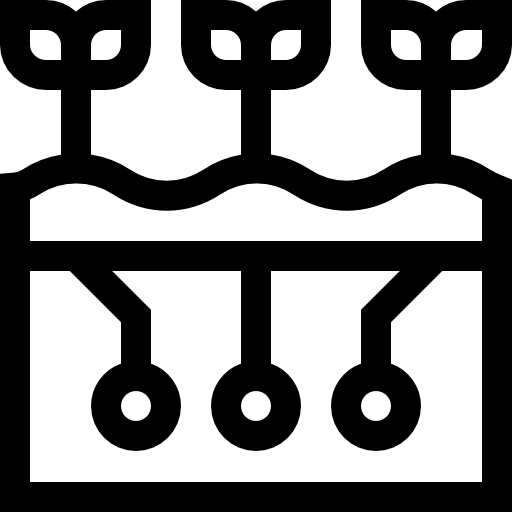Examinations

The AIH certifies hydrologists across the United States using a standard examination process.
If the applicant passes the examinations, he/she has also completed the examination requirements for registration as a professional hydrologist. Applicants (and prospective license candidates) may choose either a principles and practice examination directed toward groundwater or a principles and practice examination directed toward surface water. Candidates taking either of these examinations must also concurrently take the fundamentals of hydrology examination, covering basic knowledge common to the general field of hydrology. Water-quality knowledge is implicit in all the examinations.
Eligibility
To be eligible for testing, an interested individual must first apply and be approved for the appropriate membership type: Professional Hydrologist, Hydrologic Technician, Hydrologist-in-Training, and pay the appropriate fees. Learn which type of membership is best for you.
The membership application is then reviewed by the Board of Registration who makes recommendations to the AIH Board of Directors. Feedback on the application may be given to the applicant, who can then make corrections/update.
The AIH Board of Directors reviews the Board of Registration’s recommendations.
The applicant is then notified about next steps toward certification.
Test Administration
Testing is administered virtually with the use of a proctor. All examinations are administered and submitted in English. A minimum grade of 70 percent is considered passing. Should an applicant fail an examination, a retake is possible. No further application to AIH will be accepted from individuals who have failed either the fundamentals or either of the practice examinations three times. If you have any questions regarding examinations please contact the AIH office at admin@aihydrology.org.
2025 Exam Schedule
The Professional Hydrologist Examination is given on Fridays from 12:00 – 4:00 PM ET / 9:00 AM – 1:00 PM PT:
- January 10
- March 7
- May 9
- July 11
- September 12
- November 14
The Fundamentals (Hydrologist-in-Training) and Hydrologic Technician Examinations are given on Fridays from 12:00 – 4:00 PM ET / 9:00 AM – 1:00 PM PT:
- February 7
- April 11
- June 13
- August 8
- October 10
- December 12
AIH Exam Origination
The AIH certification examinations were developed cooperatively with the Wisconsin Department of Safety and Professional Services (DSPS). Information on Wisconsin registration can be found on the DSPS web site under the “Professions” header. In the future, this same examination may also be used for registration in other states. Wisconsin DSPS has no limit to the number of times any of the examinations can be retaken.
Fundamentals
Fundamentals of Hydrology Examination Content – For the Professional Hydrologist Exam
The fundamentals of hydrology examination tests the understanding of basic principles – going beyond empirical formulas used in the analysis of complicated situations of surface water, ground water, and water quality hydrology. The scientific under-pinning is found in the basics of mathematics, physics, chemistry, geology, meteorology, engineering, soil science, and other related disciplines. The examination tests the breadth of understanding rather than depth in a particular specialty. To be eligible to sit for the fundamentals examination, an applicant must be of not less than second semester senior standing in an approved B. S. program or have completed at least 25 semester hours or 37 quarter hours of course credits in hydrology, or have at least 5 years of hydrology experience approved by the AIH registration board. The fundamentals examination is approximately 100 multiple-choice questions. This examination will allow open book and notes. Calculators are allowed and recommended. You are not allowed to use computers or laptops for this exam. You will be given 4 hours are allowed for test completion.
- Water Quantity and Quality in the Field (20)
- Quantity (volume and flow rate)(10)
- Data collection and reporting
- Precipitation/snow melt; gages, networks, data sources/accuracy
- Evaporation pans, evaporation and evapotranspiration
- Surface water flow measurement (weirs, flumes & gages)
- Soil moisture (soil-water pressure, tension/retension)
- Recording and record keeping
- Quality (10)
- Sampling protocols (4)
- Sample collection and preservation
- Sampling equipment and containers
- Collection of duplicates, field blanks and spikes
- Monitoring wells
- Identification of key analytes
- Water-Quality Parameters (6)
- pH
- Dissolved oxygen
- Temperature
- Conductivity
- Sampling protocols (4)
- Quantity (volume and flow rate)(10)
- Quantity and Timing of Flow (45)
- Physics of Water Flow (15)
- Surface water (6)
- Uniform flow; Manning Equation
- Channel routing; reservoir routing
- Soil water (3)
- Infiltration process/rate
- Groundwater (6)
- Darcy’s Law; head data; eqipotential and flow lines
- Hydraulic conductivity; hydraulic head; “K”
- Surface water (6)
- Watersheds and Aquifers (30)
- Watershed concepts (hydrologic cycle, estimation/measurement, flow patterns, divides)
- Watershed characterization (land use, soil types, unsaturated flow)
- Lakes
- Aquifers, storage properties and confining units
- Water budgets (balance equations, hydrologic cycle, global fluxes, atmosphere, oceans, climate, global energy budget)
- Streamflow components and processes (runoff streamflow, baseflow, hydrograph separation, snow melt)
- Hydrograph modeling
- Geologic basics in watershed characterization (earth materials cycling, rocks/minerals, soils, porosity, landforms, evaporation/evapotranspiration, fluvial geomorphology
- Watershed concepts (hydrologic cycle, estimation/measurement, flow patterns, divides)
- Physics of Water Flow (15)
- Assessing Water Quality Conditions, Impacts and Sources (30)
- Water Chemistry (5)
- Basic water chemistry
- Equilibrium constants
- Redox potential and equilibrium, effects on chemical species and solubility
- pH effects on chemical solubility
- Gas solubility, CO2/PH relationships, photosynthesis/respiration
- Ion exchanges
- Units of measurement
- Chemical partitioning and transport
- Adsorbtion/desorbtion
- Basic water chemistry
- Human Impacts on Water Quality and Flow (15)
- Common inorganic and organic pollutants and sources
- Oxygen demands (biochemical, carbonaceous, nitrogenous)
- Common organic pollutants
- Point, non-point, and atmospheric sources
- Urban impacts on water quality
- Sediment- erosion (including land use effects), transport, sediment yield and settling
- Nutrients
- Quantifying loads
- Water quality standards
- Human impacts on flow (infiltration, recharge, runoff)
- Water Quality Impacts on Human Health (5)
- Chemical toxicity, chronic and acute
- Carcinogens, mutagens, teratogens
- Bacteria and pathogens
- Biological Concepts (5)
- Biological uptake and release
- Biodegradation; half life calculation
- Bioconcentration and biomagnification
- Nutrients and trophic conditions
- Limiting nutrient
- Global, regional, and local chemical cycles and balances, especially carbon and nitrogen
- Water Chemistry (5)
Statistical Analyses (5)
- Basic statistical measures (mean, median, variance, standard deviation)
- Frequency analysis
- Significance testing and analysis
- Normalization
- Detection limits
Study Materials
- “Watershed Hydrology,” Chow, Maidment, and Mays
- “Water Resources Engineering,” Linsley, Fanzini (hydrology and has other water resources topics)
- “Elements of Physical Hydrology,” Hornberger, Wiberg, and Raffensperger
Surface Water
The surface-water principles and practice examination tests the applicant’s ability to sort out meaningful data and apply hydrological and water-quality analyses to practical problems of engineering design, water resource management, regional or on-site investigations, municipal or land use planning, research formulation, etc. The examination tests the application of scientific principles and empirical information to problems commonly found in surface-water and water-quality hydrology. It is designed to demonstrate the depth expected of practicing hydrologists in formulating practical solutions. The principles and practice examination is open book examination of approximately 100 questions. References may be brought into the examination, and 4 hours are allowed for completion. Calculators are allowed and recommended. Hand-held or laptop computers are not allowed.
Surface-Water Hydrology Practice Examination Content
The numbers in parentheses at the end of each topic represent the approximate number of questions for the topic. Topics at the lowest level of detail are mainly examples of topics, and questions may address other related topics. The examination is a 4-hour open book exam with 100 questions.
- Collection and Inventory of Basic Hydrological Data (31%)
- Monitor surface water quality (4)
- Monitor precipitation quality
- Assess surface water quality conditions/impacts (4)
- Inventory water contaminant sources (3)
- Inventory conditions affecting quantity, quality and timing of flow (land use, soil types, slope drainage density) (3)
- Measure water quality in the field (3)
- Inventory channel and flood plain conditions affecting flow and habitat (3)
- Inventory physical, chemical or biological characteristics of lakes/wetlands
- Design/install/maintain monitoring networks and equipment (stream gauges, etc.) (4)
- Monitor precipitation quantity and distribution (precipitation gages)
- Select sampling protocols for collecting/storage of water quality samples (3)
- Measure surface water flow (current meter, flow control structure) (4)
- Monitor surface water quality (4)
- Interpretation, Analysis & Modeling of Hydrological Processes (46%)
- Estimate frequency of hydrologic events (4)
- Analyze precipitation data
- Estimate pollutant loads for surface water(4)
- Estimate water budget (3)
- Monitor precipitation quality, quantity and distribution
- Estimate evaporation and transpiration (use of weather station records)
- Water balance models
- Estimate groundwater discharge/recharge
- Conduct flood routing studies (3)
- Flood forecasting models
- Conduct analyses for statistical significance (3)
- Predict surface water contaminant fate and transport (3)
- Nutrient transport models
- Model watershed hydrology (3)
- Overland flow models
- Model urban watersheds (stormwater) (3)
- Model dynamic streamflow (flood routing) (3)
- Model detention basins (reservoir routing)
- Model steady-state streamflow (water surface profile analysis) (2)
- Model stream water quality (2)
- Model lake and reservoir water quality (2)
- Model soil erosion (2)
- Model sediment transport (2)
- Delineate regulatory flood plains (2)
- Interpret water chemistry data (3)
- Estimate frequency of hydrologic events (4)
- Design Hydrological Systems (23%)
- Design water control structures (3)
- Design watershed management plans (3)
- Design flood control plans
- Lake management plans
- Design runoff control measures (3)
- Design slope stabilization measures (2)
- Design detention/retention ponds (2)
- Design urban storm water management plans (2)
- Design for stream bank/lakeshore protection (2)
- Design channels (2)
- Conduct flow duration & stage analysis for habitat & other “in stream” uses
- Design stream restoration
- Design erosion control plans (2)
- Design stream restoration (2)
Groundwater
The groundwater principles and practice examination tests the applicant’s ability to sort out meaningful data and apply hydro-geological and water-quality analyses to practical problems of engineering design, water resource management, regional or on-site investigations, municipal or land use planning, research formulation, etc. The examinations test the application of scientific principles and empirical information to problems commonly found in groundwater and water-quality hydrology. It is designed to demonstrate the depth expected of practicing hydrologists in formulating practical solutions. The principles and practice examination is open book examinations of approximately 100 questions. References may be brought into the examination, and 4 hours are allowed for completion. Calculators are allowed and recommended. Hand-held or laptop computers are not allowed.
Groundwater Hydrology Examination Content
The numbers in parentheses at the end of each topic represent the approximate number of questions for the topic. Topics at the lowest level of detail are mainly examples of topics, and questions may address other related topics. The examination is a 4-hour open book exam with 100 questions.
- Collection and Inventory of Basic Hydrological Data (51%)
- Monitor groundwater quality (5)
- Quality vs. Flow
- PH/species concentration
- Monitor surface water quality (3)
- Including surface water quality conditions/impacts
- Inventory conditions affecting quantity, quality and timing of flow (land use, soil types, slope drainage density) (2)
- Inventory water contaminant sources (4)
- Measure water quality in the field (3)
- Assess groundwater quality conditions/impacts (6)
- Characterize geology for groundwater flow and contaminant flux (well logs, geophysical logs) (5)
- Select sampling protocols for collecting/storage of water quality samples (3)
- Conduct & interpret tests to estimate saturated hydraulic conductivity and/or storage coefficients (3)
- Design networks to determine groundwater flow systems (3)
- Design monitoring wells (4)
- Design groundwater-monitoring networks (5)
- Design/conduct boring programs to characterize contaminant source/extent (5)
- Monitor groundwater quality (5)
- Interpretation, Analysis & Modeling of Hydrological Processes (38%)
- Estimate groundwater discharge/recharge (3)
- Estimate, measure or analyze infiltration
- Infiltration models
- Estimate water budget (2)
- Analyze precipitation data
- Water balance models
- Interpret water chemistry data (5)
- Predict groundwater contaminant fate and transport (5)
- Model vadose zone contaminant transport
- Conduct analyses for statistical significance (2)
- Model local groundwater flow (4)
- Model regional groundwater flow (3)
- Model regional groundwater quality (2)
- Model groundwater contaminant transport (4)
- Determine groundwater flow direction and velocity (5)
- Estimate pollutant loads for groundwater (3)
- Estimate groundwater discharge/recharge (3)
- Design Hydrological Systems (11%)
- Design subsurface remediation systems (product/contaminant recovery, soil vapor, extraction, air sparging, etc.) (4)
- Design water supply wells (4)
- Design wellhead protection plans (3)
Example Questions
Question: Evaporation pans provide an approximate measure of
- actual evapotranspiration
- actual evaporation
- potential evapotranspiration
- actual transpiration
Correct answer: (c)
Question: If continuous water-level measurements and a stage-discharge rating are used to monitor streamflow discharge, which of the following factors would not change the stage-discharge rating?
- ice formation
- rock ledge
- gravel riffle
- aquatic vegetation
Correct answer: (b)
Question: Best Management Practices (BMPs)
- were originally authorized in the 1948 Water Quality Act
- are approved by the Corps of Engineers
- are often a combination of land use controls and engineering applications
- are primarily aimed at reducing point sources of pollution
Correct answer: (c)
Question: Which of the following constituents found in ground water is most likely associated with agricultural land use?
- Nitrate
- Sulfate
- Arsenic
- Chromium
Correct answer: (a)
Suggested Exam References
- “Watershed Hydrology,” Chow, Maidment, and Mays
- “Water Resources Engineering,” Linsley, Fanzini (hydrology and has other water resources topics)
- “Elements of Physical Hydrology,” Hornberger, Wiberg, and Raffensperger
- “Hydrogeology,” Davis and DeWest
- “Ground-Water Hydrology and Hydraulics,” McWhorter and Daniel Sunada
- Wetzel, Limnology
- Dunne and Leopold, Water in Environmental Planning
- “Water Resources Planning and Management,” Quentin Grafton






